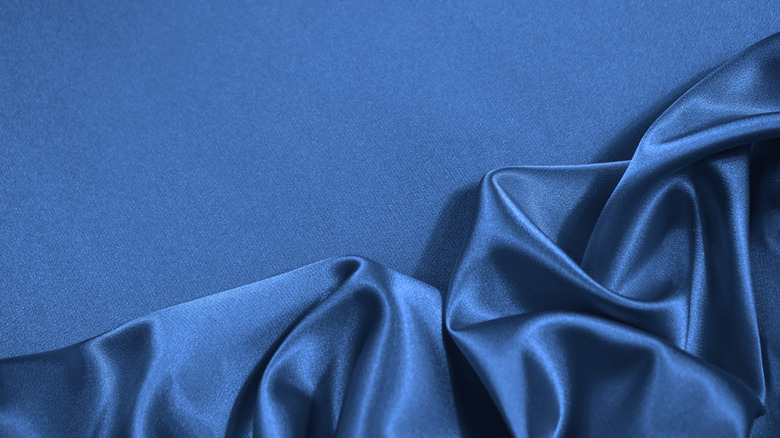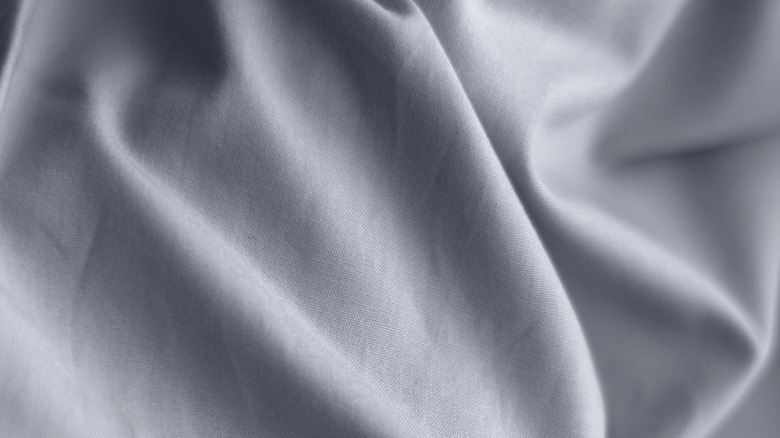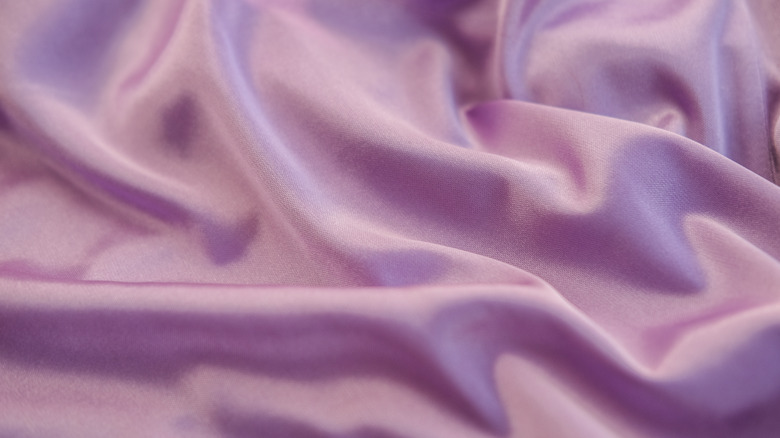What's The Difference Between Percale And Sateen Sheets?
Debating what kind of sheets to get can seem like a frivolous decision, but sleep is a major factor in our health. Not getting enough or getting poor quality sleep can do more than just leave you groggy — according to the National Institute of Health, sleep deprivation is linked to heart disease, diabetes, high blood pressure, and strokes. It also plays a major role in mental health, socialization, and day-to-day safety. Choosing the right sheets can help you fall asleep and stay asleep. Just consider the price tag on that higher thread count as an investment in your health.
Two of the most popular types of fabric used for sheets are percale and sateen, but figuring out the difference and choosing the right type for your preferences can get confusing if you're not an expert on fabrics. We're here to help. Keep reading for a simple breakdown of each so you can rest easy knowing you made the right decision.
Percale sheets
The term percale doesn't actually mean a certain material, it just refers to the way the fabric is woven (via The Sewing Partner). It's a simple over-under pattern, like the lattice on top of a pie, just on a much smaller scale. This weave pattern gives percale a stiffer feel and is often compared to the texture of a dress shirt. It can be made of a variety of materials, but most sheets are usually cotton or cotton blends.
Percale is perfect if you're a hot sleeper or live in a warmer climate because it's so lightweight and breathable. It's also more durable than a sateen option and can withstand frequent washing while still maintaining its integrity. On the other hand, however, it isn't quite as soft, and it tends to wrinkle more than sateen. If you're looking for that fresh hotel feel, percale can provide it, but it's more crisp and light than silky and luxurious.
Sateen sheets
Sateen sheets are also typically made of cotton or cotton blends, but they have a more complex weave that results in a slightly shiny, smooth finish that mimics satin (via Tissura). While it's still more breathable than something like flannel, sateen traps more heat than percale and can make things uncomfortable and a little stuffy for hot sleepers. It's also slightly less durable, but it's significantly less prone to wrinkling so your bed will still look put together without constant adjustments. Its defining characteristic is its silky softness, so if that's what you're looking for, a sateen finish may be the correct kind of fabric for you.
Trying to break down technical terminology while shopping for bedding may make your head spin, but luckily, there are just a few differences in texture. It all comes down to personal preference in this decision, and whether you prioritize crispness and breathability or softness and shine in your bedding.


